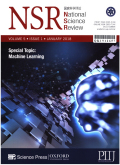- 钛学术文献服务平台 \
- 学术期刊 \
- 科教文艺期刊 \
- 科研管理期刊 \
- 国家科学评论(英文版)期刊 \
Jian-Wei Pan: building the quantum internet
Jian-Wei Pan: building the quantum internet
基本信息来源于合作网站,原文需代理用户跳转至来源网站获取
摘要:
For many decades since its inception in the early twentieth century, quantum mechanics seemed to be an exotic and peculiarly non-intuitive kind of physics that applied to matter at the smallest scales: the laws that govern atoms, photons and subatomic particles.All our engineering, meanwhile, was dominated by the familiar rules of classical physics, in which objects have definite positions, trajectories and properties.
But, in the past several decades, scientists hare started to harness quantum rules in practical technologies.In 198S, the physicist Richard Feynman suggested that computers governed by quantum rules might be capable of computations beyond the means of classical ones like those in use today.At much the same time, other researchers showed that information encoded in quantum states could be transmitted between a sender and receiver using a kind of encryption that could not be intercepted and read without that being detected.Quantum computers and quantum cryptography have now become central components of a real-world quantum-information technology that may soon find scientific,industrial and social uses.

推荐文章
Bluetooth PAN控制机制及其实现
蓝牙个人区域网
自组织网络
微微网
散射网
网络访问点
Quantum PLC在水电厂LCU改造中的应用技巧
改造
现地控制单元
Quantum PLC
Modicon984 PLC
对等数据传输
BH-WEI完井液在迪西1井的应用
BH-WEI完井液
防止地层损害
高密度
盐结晶
沉降稳定性
迪西1井
TPU/PAN静电纺防水透湿膜的制备
TPU
PAN
静电纺丝
防水透湿
内容分析
关键词云
关键词热度
相关文献总数
(/次)
(/年)
文献信息
| 篇名 | Jian-Wei Pan: building the quantum internet | ||
| 来源期刊 | 国家科学评论(英文版) | 学科 | |
| 关键词 | |||
| 年,卷(期) | 2019,(2) | 所属期刊栏目 | |
| 研究方向 | 页码范围 | 374-376 | |
| 页数 | 3页 | 分类号 | |
| 字数 | 语种 | 英文 | |
| DOI | 10.1093/nsr/nwy102 | ||
五维指标
引文网络
引文网络
二级参考文献 (0)
共引文献 (0)
参考文献 (0)
节点文献
引证文献 (0)
同被引文献 (0)
二级引证文献 (0)
2019(0)
- 参考文献(0)
- 二级参考文献(0)
- 引证文献(0)
- 二级引证文献(0)
引文网络交叉学科
相关学者/机构
期刊影响力
国家科学评论(英文版)
主办单位:
中国科技出版传媒股份有限公司
出版周期:
月刊
ISSN:
2095-5138
CN:
10-1088/N
开本:
大16开
出版地:
北京市
邮发代号:
80-671
创刊时间:
2014
语种:
eng
出版文献量(篇)
773
总下载数(次)
0
总被引数(次)
431
期刊文献
相关文献
推荐文献

 免费查重
免费查重










